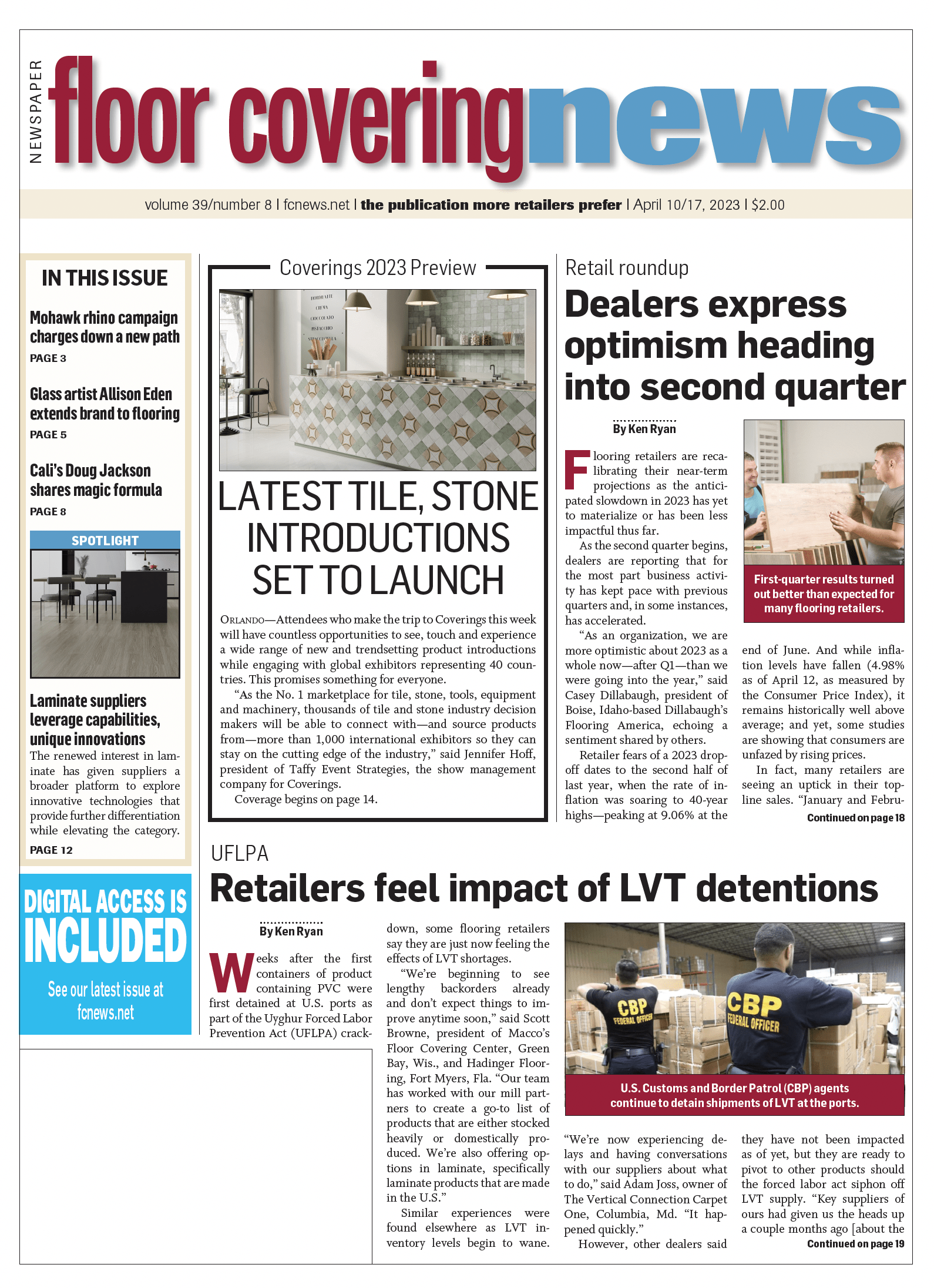 Generally speaking, the outlook for the flooring industry remains bright through the end of the decade. Nobody is suggesting there won’t be some potholes in the road or turbulence in the air, but the many positive dynamics should outweigh current and future headwinds.
Generally speaking, the outlook for the flooring industry remains bright through the end of the decade. Nobody is suggesting there won’t be some potholes in the road or turbulence in the air, but the many positive dynamics should outweigh current and future headwinds.
Short term, we are still dealing with inflation, which is getting better, and interest rate hikes, which should abate. (The latter is more detrimental to our industry.) We also have the ongoing issue at the ports, where as much as $70 million worth of LVT/SPC is being held up by customs. I’m not going to get into that here, but Floor Covering News has been covering this topic extensively in our last three issues.
Keep a few things in mind: There has been so much relocation over the past few years. People tend to replace flooring sooner or later, and “later” can last for a number of years. That migration is not ending anytime soon. People are escaping states like New York, New Jersey, Illinois and Michigan. (Those are the top four, along with Wyoming.) Many reasons: High taxes, increasing crime with lax penalties, politics and weather are just a few. (Wyoming is probably just too boring.) The advent of remote work, of which I’ve never been a fan, allows people to live just anywhere their hearts desire and wallets approve. That trend is not ending anytime soon.
Home prices are stabilizing in most markets and, in many cases, decreasing. That should continue to fuel more migration. On the other hand, 37% of people are living in homes with no mortgage and 99% of borrowers have a mortgage rate lower than the current market rate. They’re not going anywhere, whether they want to or not. And history tells us when people stay in their homes, they get tired of them and renovate. Flooring is a big part of that.
Now, let’s talk about inflation. If you take ITR Economics’ view toward where inflation is heading, they clearly believe the Federal Reserve could stop raising the Fed funds rate immediately despite the very low unemployment rate. To strive for both low inflation and higher unemployment is to run the risk of turning what is expected to be a mild 2024 recession into a more painful and potentially longer decline. Here is what they see:
- Inflation is coming down. The road signs regarding ongoing disinflation are increasing in number. The only real holdout is the Consumer Price Index Housing component. That is not a surprise. This part of the CPI is slow to depict disinflation. But home prices are either coming down (not to pre-COVID-19 levels) or not increasing nearly as much as they were in the still-hot markets (Florida, for example). Rents are following suit. All of that means today’s CPI reading of 8.2% will be coming down and, with that, the last vestige of stickiness of the high inflation rate.
- The extended inflation outlook is benign through 2024. ITR’s long-term indicator for inflation is whether government spending is increasing year-over-year or decreasing. The CPI inflation rate is down 14.2% because the COVID-19-inspired level of spending is no longer occurring. Adjusted for the two-year lead time, that means we should be relatively unconcerned about inflation rearing its head again until we are beyond 2024. They are projecting inflation for 2023 will be 3.6% come the end of the year. That should be low enough to see “core inflation” at the Fed’s threshold for easing interest rates.
- Spending will not stay down. Remember all the dollars involved in the infrastructure bill and “anti-inflation” bill? Inflation will be back. ITR continues to see it as a problem for the second half of this decade.
All forecasts assume the Federal Reserve will cease its relentless push toward higher interest rates after the second quarter of 2023. Should it push rates higher than 50–100 basis points in the first half of 2023, and should it push rates beyond that threshold after mid-2023, we run the risk of seeing the magnitude of the recession deteriorating into something more serious than a mild decline.
ITR Economics also projects that the impending recession will end in December 2024 based on past history. They say the Fed will/should be lowering interest rates by the end of 2023, which should get the marketplace back into a normal yield curve by late 2023 or early 2024.

